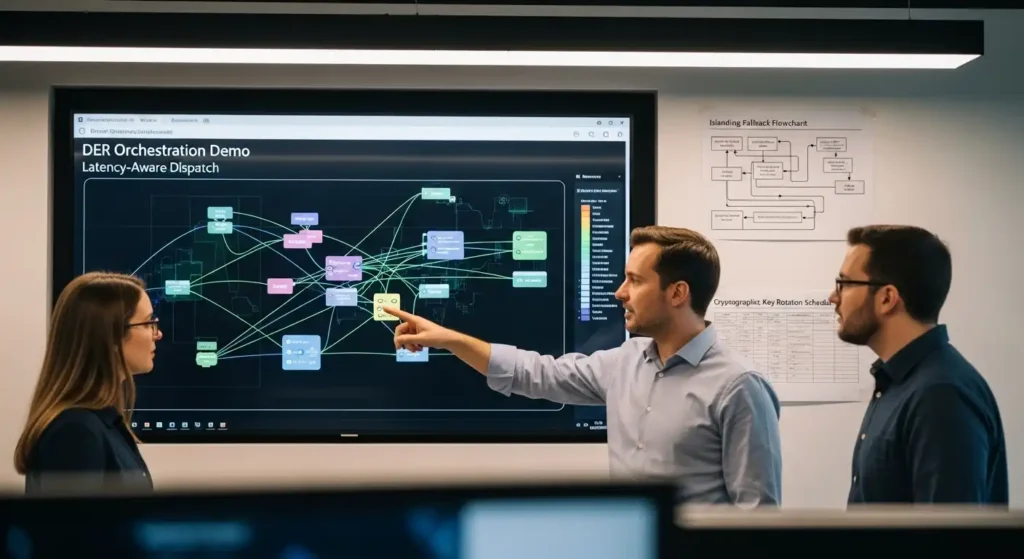Green Innovation & IP: Patent Trends in Sustainable Technologies
From grid-scale batteries and hydrogen hubs to advanced wind, solar, and carbon management, sustainable technologies are reshaping the U.S. economy. Intellectual property strategy sits at the center of this transformation. For founders, in-house counsel, and investors, understanding where green technology patents are rising, how courts and agencies are evolving standards, and which claim strategies actually protect competitive advantage can make or break commercialization. This long-form guide distills the latest patent trends in clean tech, practical filing tactics, and risk controls so you can build an IP portfolio that supports scale.
Why green innovation needs a different IP playbook
Clean energy and climate solutions often break into markets with complex supply chains, capital-intensive deployments, and public incentives. That raises distinct IP risks and opportunities:
- Systems over widgets: Many breakthroughs are systems (e.g., controls, algorithms, manufacturing lines, grid orchestration) rather than standalone devices. Claims, enablement, and freedom-to-operate require broader, interoperable thinking.
- Fast standards formation: Interconnection, safety, and performance standards (from UL to IEEE) can shift quickly. Portfolio planning should anticipate standards to avoid later design-arounds and to position for licensing.
- Policy-driven demand: Incentives and mandates can surge a niche into mainstream overnight. A head start on filings and continuation practice can create durable barriers without blocking critical adoption.
- Data-heavy innovation: Controls for DERs, microgrids, and grid-edge devices rely on telemetry and ML. Trade secret vs. patent decisions for datasets and models require deliberate frameworks.

Where filings are growing: technology hotspots to watch
Although patenting spans the full sustainability stack, several clusters consistently show momentum for U.S.-focused innovators:
1) Grid modernization & orchestration
Expect continued growth in inventions that forecast, coordinate, and optimize distributed energy resources (DERs), including V2G, demand response, and virtual power plants. Claims frequently combine control logic with communications architectures and market participation methods. For defensibility, emphasize measurement fidelity, latency handling, and cybersecurity primitives in addition to the optimization objective.
2) Energy storage & power electronics
Battery chemistry is only part of the story. Power electronics, thermal management, BMS algorithms, manufacturing of electrodes and solid-state interfaces, and lifecycle diagnostics (state-of-health, second-life use) offer fertile claim space. Method claims on formation cycles or defect detection can be particularly valuable for manufacturing partners.
3) Clean fuels & hydrogen
Electrolyzer stack designs, catalysts, compression and storage, and hybrid systems that integrate hydrogen with renewables and industrial heat are patent-active. Consider claims that cover operating envelopes (temperature, pressure, duty cycle) and fault-tolerant control to raise design-around costs.
4) Carbon management
Direct air capture (DAC), point-source capture, mineralization, and MRV (measurement, reporting, verification) systems present opportunities to protect hardware, sorbent chemistry, and MRV algorithms. Method claims around sensor calibration, leak detection, and data integrity can be decisive for projects relying on credits or compliance.
5) Advanced solar, wind, and thermal
In solar: tandem cells, perovskite stability/encapsulation, and manufacturing lines; in wind: blade materials, predictive maintenance, and floating substructures; in thermal: industrial heat pumps and waste-heat recovery. Cross-licensing potential is significant where standards and supply chains consolidate.

U.S. policy and agency signals every filer should track
Patent strategy does not operate in a vacuum. U.S. agencies and global bodies signal where innovation and competition are headed. For U.S. filers, keep an eye on:
- USPTO examination priorities and pilot programs: Even when acceleration programs change, the Office’s notices and guidance reveal examination focus areas (e.g., clarity on climate-mitigation subject matter, updated formality guidance, and petition options for advancing examination).
- Global trend monitors: Reports and dashboards from international organizations (WIPO, IEA, IRENA, EPO) help benchmark filing intensity by sector, which can shape your continuation and foreign-filing strategy.
- Standards & safety regimes: Grid-interconnection, cybersecurity baselines, and safety certifications often become de facto requirements. Capture standard-specific features in claims and specifications where defensible.
Portfolio design for sustainable tech: practical tactics
Whether you are a startup pursuing your first patent family or a growth-stage company rationalizing dozens of assets, the fundamentals below apply.
1) Anchor claims in measurable performance
Green innovations often promise efficiency or emissions benefits. Claims that encode measurable performance (e.g., round-trip efficiency, specific degradation profiles, conversion yields, carbon-intensity thresholds) enhance enforceability and licensing. Pair apparatus claims with method claims that define the path to those metrics.
2) Blend hardware, software, and process claims
Modern clean tech is cyber-physical. Draft coordinated claim sets that cover embedded controls, cloud coordination, and manufacturing or field processes. Include dependent claims that lock down sensor selection, sampling cadence, and anomaly thresholds.
3) Protect the factory: manufacturing IP is a moat
For batteries, electrolyzers, modules, and power electronics, yield and reliability win. Capture proprietary manufacturing sequences, inline metrology, and failure-screening tests. Trade secrets may cover recipes and tolerances; patents can protect tooling, fixtures, and QC algorithms so partners cannot easily substitute.
4) Write for interoperability
Grid-connected products live and die by interoperability. Future-proof claims with protocol-agnostic language (while naming exemplary protocols), clear definitions for data schemas, and fallbacks for message loss or latency. This reduces obvious design-arounds and strengthens standard-essential licensing positions if standards emerge.
5) Use continuations to meet a moving market
Clean-tech markets evolve quickly. File broad, well-supported parents and reserve continuations or divisionals to capture adjacent SKUs, deployment modes, or market integrations (e.g., V2G, DERMs, electrolyzer + industrial heat). A deliberate continuation tree can track standards and incentives over a multi-year commercialization arc.

Claiming examples by technology area
Below are illustrative claim strategies (not legal advice) geared to common green-tech domains:
- Battery systems: Independent apparatus claim on a pack with a BMS configured for adaptive balancing based on cell-impedance spectroscopy; dependent claims on thermal pathways, coolant routing, and SOC/SOH observers; method claim for diagnostic charge/discharge sequences.
- Hydrogen: Method claim for dynamic electrolyzer operation with renewable energy variability; apparatus claims on stack geometry and catalyst layer porosity; system claim adding compression and storage with safety interlocks and leak analytics.
- Grid orchestration: System and method claims for DER coordination that prescribe latency-aware dispatch, probabilistic forecasting, and fallback islanding; dependent claims on cybersecurity primitives (e.g., key rotation, signed telemetry).
- Carbon management: Apparatus claim on sorbent cartridges with controlled humidity windows; method claim for MRV workflow with calibration routines and tamper-evident logging.
Common pitfalls (and how to avoid them)
- Under-describing data and control: Many specifications hand-wave the control stack. Include concrete signal paths, sampling rates, timing diagrams, and failure modes.
- Ignoring manufacturability: If a claim cannot be manufactured at scale, its value drops. Collaborate with operations teams to capture build-of-process know-how.
- Relying only on utility patents: Don’t overlook design patents for modules, housings, or UI displays that matter in the market, especially when products compete on industrial design.
- Skipping trade secret hygiene: Decide early what to hold back. Document access controls, encryption, vendor NDAs, and incident response so trade secret protection is credible.
- Late freedom-to-operate (FTO): Run staged FTO reviews keyed to milestones (pilot, certification, scale-up). Use the results to shape claim amendments and licensing outreach.
Foreign filing & global harmonization for U.S. companies
Most green-tech supply chains are global. A U.S.-only portfolio can leave gaps in manufacturing and deployment countries. Consider:
- PCT timing: Use the PCT to preserve options while testing product–market fit. Track national-phase deadlines against pilot deployments and customer traction.
- Where you build vs. where you sell: File where competitors manufacture components (to control supply) and where projects interconnect (to influence deployment).
- Standards jurisdictions: Regions that shape critical standards (e.g., EU grid codes) can be strategic even if near-term revenue is U.S.-heavy.
Litigation and enforcement outlook
Green-tech litigation is rising as markets scale. Expect activity in:
- Component-level disputes: Electrolyzer plates, membrane assemblies, inverter control boards, and BMS firmware are common battlegrounds.
- System integrator conflicts: EPCs and platform providers may face disputes over orchestration algorithms and performance guarantees.
- Standards-essential patents (SEPs): As grid protocols and safety standards coalesce, SEP assertions and FRAND questions can emerge. Keep meticulous records of contributions to standards bodies.

Drafting checklist for sustainable technology patents
- Define performance metrics (efficiency, emissions, reliability) and test methods used to measure them.
- Describe control loops with inputs, outputs, sampling cadence, and exception handling.
- Include cybersecurity requirements where telemetry or remote control is involved.
- Map manufacturing steps, inline inspections, and pass/fail criteria.
- Provide interoperability details (protocols, schemas) and fallbacks for degraded networks.
- Offer multiple embodiments that cover component substitutions and scale tiers.
Integrating patents with trade secrets and data rights
An effective green-tech strategy blends patents with trade secrets and contractual data controls. Consider:
- Patents: Protect the “what” and the “how” that must be disclosed for market and regulatory trust.
- Trade secrets: Preserve sensitive recipes, tolerances, or ML feature engineering that are hard to reverse engineer.
- Data governance: Use licenses, DPAs, and supplier agreements to protect telemetry, derived labels, and validation datasets.
What changing U.S. policy means for filing and timing
Policy shifts influence prosecution timelines and industry direction. Even as specific acceleration programs come and go, the signal remains: climate-mitigation and clean-energy inventions are a priority area, with active attention from agencies and standards-makers. Build that expectation into portfolio budgeting, petition strategies, and your continuation tree so you can capitalize on market windows.
Case-style scenarios (illustrative)
Scenario A: Battery startup scaling from pilot to Series B
A California startup developing high-silicon anodes files an initial utility application on core materials and anode architecture. As pilot lines run, they discover a formation protocol that halves early-cycle degradation. They file a continuation with method claims on the formation profile plus a divisional for inline impedance measurement. A design patent protects the module housing used by early adopters. The result: layered protection across materials, process, and product that improves licensing leverage with cell manufacturers.
Scenario B: Grid orchestration platform entering utility pilots
An orchestration SaaS for DER fleets drafts system claims on latency-aware dispatch with probabilistic forecasting, plus method claims for fallback islanding. Dependent claims specify cryptographic signing of telemetry and key rotation. The company parallel-files in key interconnection markets while holding ML feature engineering as trade secrets. When an RFP references exactly those security primitives, the portfolio becomes a competitive differentiator.
Scenario C: Hydrogen integrator protecting integration IP
An EPC building hybrid solar-electrolyzer-ammonia systems files claims on stack-level water purity management and control logic for dynamic operation with variable renewables. They also claim compression, storage, and safety interlocks as a system. MRV for emissions accounting is documented and partly patented; calibration routines are kept as trade secrets. As standards evolve, the team uses continuations to track new interconnection requirements.
How to align IP with go-to-market
IP strategy should map to revenue milestones:
- Pilot phase: Emphasize provisional filings and early utility claims to establish priority. Run a first FTO scan and record design-around options.
- Certification phase: Add claims directed to standards compliance, safety, cybersecurity, and MRV routines—features utilities and industrials scrutinize.
- Scale-up phase: Use continuations to capture variants discovered in production and to fence in suppliers. Consider foreign filings where manufacturing is likely.
Key takeaways for U.S. teams
- Claim performance and process, not just architecture. Measurable outcomes and how you achieve them make portfolios harder to design around.
- Design for interoperability and standards. Write with protocols, telemetry integrity, and safety in mind.
- Preserve optionality with continuations. Markets and standards move; your claim tree should too.
- Blend patents with trade secrets and data rights. Use the right tool for each asset.
- Monitor global trend signals and agency notices. They inform where to file, when to accelerate, and how to position claims.
